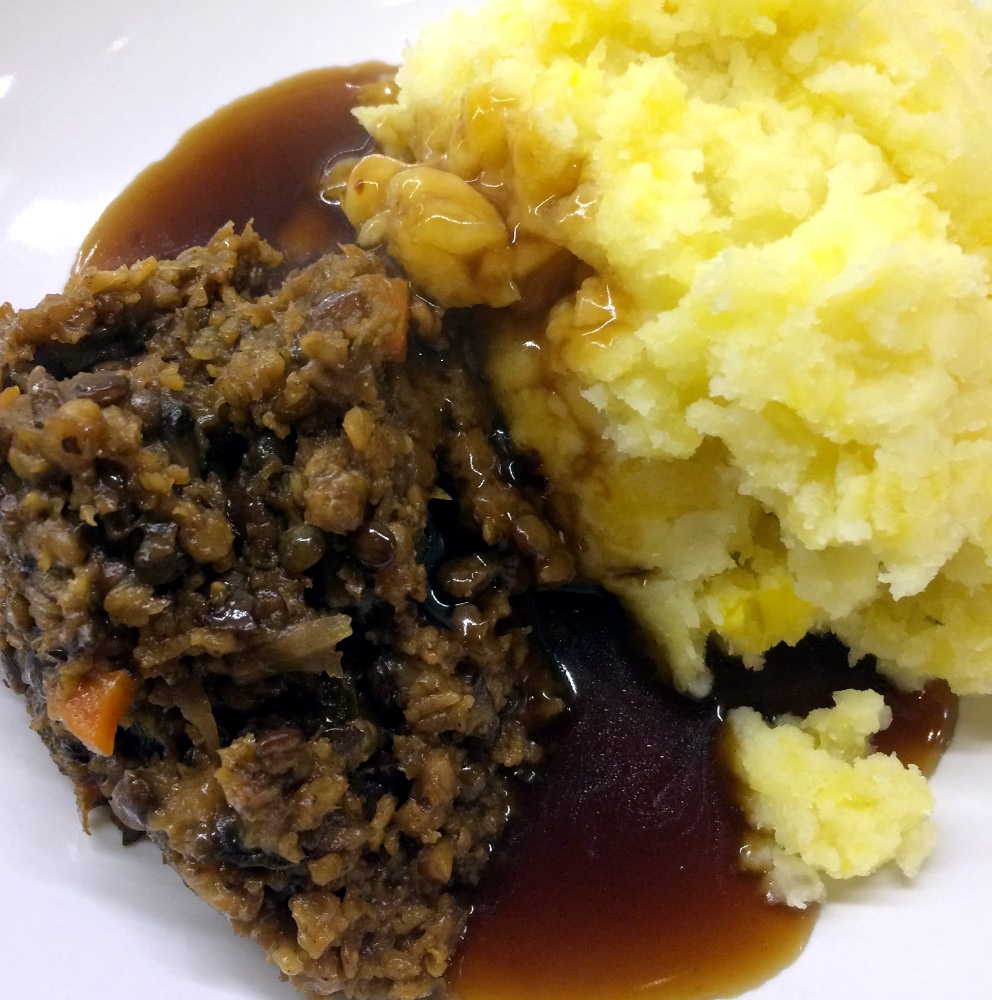Recipe for Traditional Haggis
Haggis is a traditional Scottish dish made with sheep’s offal and oatmeal. For non-Scots, it is most associated with Burns Night (25 January) but can be eaten year-round. Traditional recipes call for sheep’s pluck (that is, heart, liver and lights (lungs)) packed in a sheep’s stomach. It is difficult to source lights, but they contain very little nutritive value or taste anyway, so I dispense with them while retaining the heart and liver. Many recipes also call for other meat ‘scraps’ (beef or lamb), together with some suet. As I rarely have such ‘scraps’ to hand, I use breast of lamb instead. It is fairly inexpensive and has quite a high fat content, so it makes a good substitute for both ‘scraps’ and suet. Finally, I don’t use either traditional or artificial casing. The widest ox bung is hard to source (and expensive) and sheep’s stomachs are also difficult to find. The artificial casings are just inedible tubes, tied off at both ends with string, and not worth bothering with in my limited experience of them. The easiest way to get a roundish haggis is to pack the mixture into a suitable pudding basin and steam it, like a pudding. It’s easy to turn out, and easy to slice.
This recipe makes quite a lot of haggis, but it is difficult to buy small enough quantities of the meats required to make very much less unless an obliging butcher can sell you just a single heart and everything else in proportion. Cooked haggis freezes well.
Haggis is traditionally served with bashed neeps and tatties (mashed swede and potato). Cut open the haggis casing and either spoon out the filling or peel off the casing and cut the haggis into slices for serving. Whisky and mustard sauce go down well, too.
Ingredients (for five 1 lb (450 g) puddings)
- 1,350 g of lamb’s hearts, liver and breast of lamb (450 g of each)
- 270 g pinhead oatmeal (see notes)
- 135 g onion
- 540 ml stock (from the preliminary cooking of meats)
- 3 tsp salt
- 2 tsp ground white pepper
- 1 tsp ground mixed spice
- Suitable casings (but see notes)
Method
- Try and buy the liver in one piece, if possible. Put all the meats into a suitable saucepan and cover with cold water. Bring to a simmer and skim off any scum that forms in the first few minutes. Gently cook the meats at a bare simmer for an hour and then lift them out of the stock to cool. Reserve 540 ml of the stock for later. Any that remains makes an excellent base for gravy.
- When cool, cut up all the meats and mince them coarsely.
- In a large mixing bowl, combine the minced meats, the oatmeal, and the onion (finely chopped), together with the salt and seasonings. Mix thoroughly and then add the reserved stock and mix again. Leave the mixture to stand for a few minutes so that the oatmeal can absorb the stock.
- If you are using traditional or artificial casings, they may need soaking before use. Fill the casings and tie them off securely with string. Put them into a large saucepan and cover them with cold water. Bring them to a boil and simmer, gently, for two hours. Check, from time to time, whether the water needs topping up. I prefer to steam my haggis in pudding basins: the no-hassle approach.
- The haggis is ready to eat as soon as it has been cooked, but it reheats (and freezes) well.
Notes
- The mixture will expand as it cooks, so don’t overfill whatever container you use. I have found that I can only get about 375 g of the mixture into an artificial cellulose casing that is meant to hold 1 lb (450 g). If the casing splits, the contents will get waterlogged and be spoiled.
- You can use rolled oats (porridge oats) instead of oatmeal. Blitz them, briefly, in a food processor – but don’t overdo it, and don’t use oat-based instant breakfast cereal. Coarse pinhead oatmeal is traditional and gives the best texture.
- As a quick guide to varying the overall quantities, calculate the oats at 20% of the meat weight and the onion at 10%. Use twice the weight of the oats in stock (remembering that 1 g = 1 ml of anything that is predominantly water-based).



This is the first in a short series of Scottish recipes. The others include Vegetarian Haggis and All-Butter Shortbread.


Only a very little Scottish blood runs in my veins, and I believe Burns to have been no better a poet than McGonagall, so I keep Burns Night somewhat tongue-in-cheek; but I do like Haggis, even though I rarely make it any other time of year. It’s one of those ‘Winter Warmers’ that helps the transition from Christmas feasting to the grim reality that is February, and there’s usually the last of a bottle of malt whisky (from Christmas) to drink up.
It’s well-worth making – you only need a decent butcher and a mincer – and I got eight single-serving puddings, this year, for very little effort. We’ll keep two to eat in the next week, and then vac-pac and freeze the others to enjoy in the next month or two. It’s too early to be dreaming of a Spring risotto made with the season’s first peas and they make a pleasing alternative to proper faggots. Other people eat ready-meals – hahaha.
LikeLike